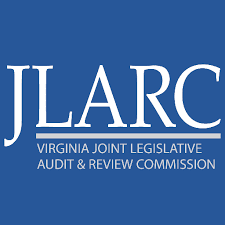On October 16, the Joint Legislative Audit and Review Commission (JLARC) met to present several reports, one of which was an overview of eligibility of public safety occupations for enhanced retirement benefits. The report examined the responsibilities of various public safety occupations as well as the estimated costs to state and local governments of providing enhanced retirement benefits to certain occupations currently not included in Code. Though the report did not recommend to legislators which occupations should be added, it did recommend that two guidelines should be used to determine whether enhanced benefits are appropriate: 1) employees should have a high level of responsibility for ensuring the safety of others, 2) employees should have physically and psychologically demanding jobs that are more difficult to perform as they age. VACo has long expressed an interest in this subject as any new mandate by the General Assembly to require that certain occupations receive enhanced retirement benefits would increase costs to local governments for certain positions through higher insurance premiums, whereas making these positions eligible for a local option would preserve local control in the matter and address VACo’s concerns.
Virginia’s enhanced retirement benefits are more generous than retirement benefits for general state and local employees in three ways. First, employees with enhanced benefits can retire earlier and with less public service than non-public safety employees. Second, compared with retirement benefits for general state or local employees, enhanced retirement benefits generally have a higher multiplier, which results in a higher monthly pension benefit during retirement. Third, some state and local public safety employees eligible for enhanced retirement benefits receive a hazardous duty supplement, which is added to their monthly retirement benefit. Currently, locally employed or supplemented occupations eligible for these benefits include firefighters and EMTs, sheriffs and deputy sheriffs, police officers, and local and regional jail staff.
The JLARC report follows a multiyear process after the Senate Finance and Appropriations and House Appropriations committee chairs sent a letter in 2022 requesting that JLARC staff review the eligibility of several state and local public safety occupations for enhanced retirement benefits. The request was in response to legislation submitted in recent years to make these occupations eligible for enhanced benefits. During the 2023 General Assembly session, the Senate Finance and Appropriations and House Appropriations committees requested that additional public safety occupations be included in the JLARC review in response to proposed legislation. These occupations included three locally funded occupations: 911 dispatchers, juvenile detention specialists, and animal control officers.
Of the three local government funded occupations, the most numerous in terms of estimated positions and potential impact to local finances is 911 dispatchers. There are estimated to be 1,000 local 911 dispatch positions in the Commonwealth. 911 dispatchers answer emergency calls and dispatch first responders. JLARC assessed that 911 dispatchers have a high level of public safety responsibility and dispatchers face a high level of psychological demands, but minimal physical demands. The estimated cost of providing enhanced benefits for 911 dispatchers in the first-year ranges from 0.5% for one large locality to 25% for one small locality. An estimated increase in local retirement contribution rate ranges from 0.05% to 2.55%. All local cost estimates for the three local occupations were based on eight illustrative localities for which cost estimates were developed.
There are an estimated 825 local juvenile detention specialist positions in the Commonwealth. Local juvenile detention specialists supervise residents in local juvenile detention facilities. JLARC assessed that juvenile detention specialists have a low level of public safety responsibility and face a moderate level of physical and psychological demands. The estimated increased cost of providing enhanced benefits for local juvenile detention specialists in the first year is approximately 1%. The amount of estimated first-year increase could be as high as $440,000 for one large locality. The estimated increase in local retirement contribution rate in the first year is approximately 0.14%.
There are an estimated 490 local animal control officer positions in the Commonwealth. Local animal control officers enforce state and local laws related to animals. JLARC assessed that animal control officers have a moderate level of public safety responsibility and face a moderate level of physical and psychological demands. JLARC estimated increases in local retirement costs in the first year ranging from 0.1% to 1.1%. Estimated first-year cost increase could be as high as $181,000 for one large locality. Overall, estimated increases in local retirement contribution rate could range from 0.02% to 0.10%.
Additional considerations that were referred or raised for inclusion in JLARC review included the recruitment and retention of public safety staff and enhanced benefits for school resource officers, among other considerations. JLARC determined that some public safety staff suggested in interviews that enhanced retirement benefits would improve recruitment and retention, but other strategies could address these challenges more directly. Other strategies could include increasing salaries, higher starting salaries for new employees, larger and more regular salary increases for existing employees, signing and retention bonuses, larger health insurance premium subsidies, and additional mental health supports. JLARC also determined that school resource officers are already eligible for enhanced retirement benefits and that school security officers (SSOs) ranked lower on criteria for enhanced retirement benefits. Ultimately, JLARC concluded that some public safety occupations have similar levels of responsibility and demand but receive different levels of enhanced retirement benefits.
VACo appreciates the work of the JLARC staff in preparing this report and for the opportunity to be interviewed by JLARC staff during its composition. VACo also appreciates the work and data provided by VAcorp, which facilitated an analysis of workers’ compensation claims data crucial to the findings of the report. VACo fully expects additional legislation for the 2024 session related to enhanced retirement benefits and will continue to work to prevent unfunded mandates being imposed on localities by preserving the local option to expand benefits to certain relevant occupations.
The full JLARC report and the slides from the JLARC staff presentation can be found here and here respectively.
VACo Contact: Jeremy R. Bennett

